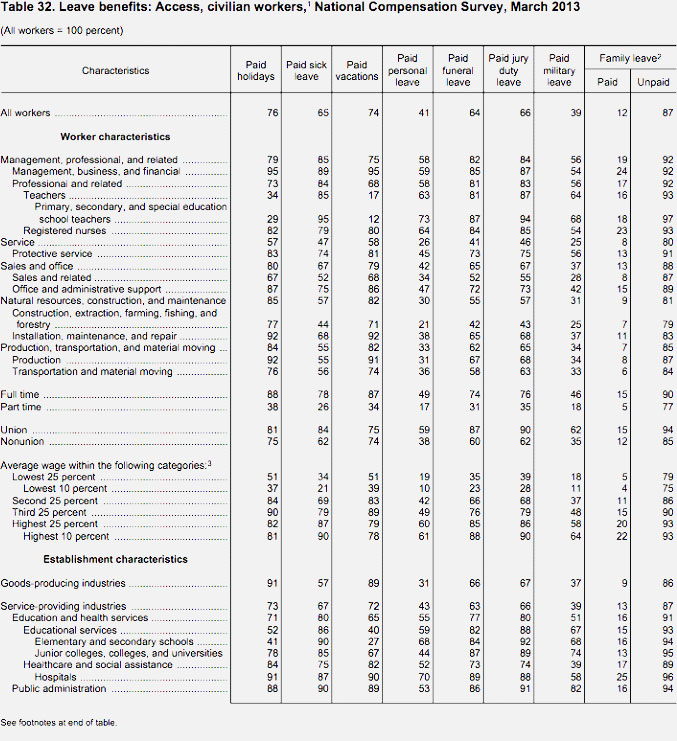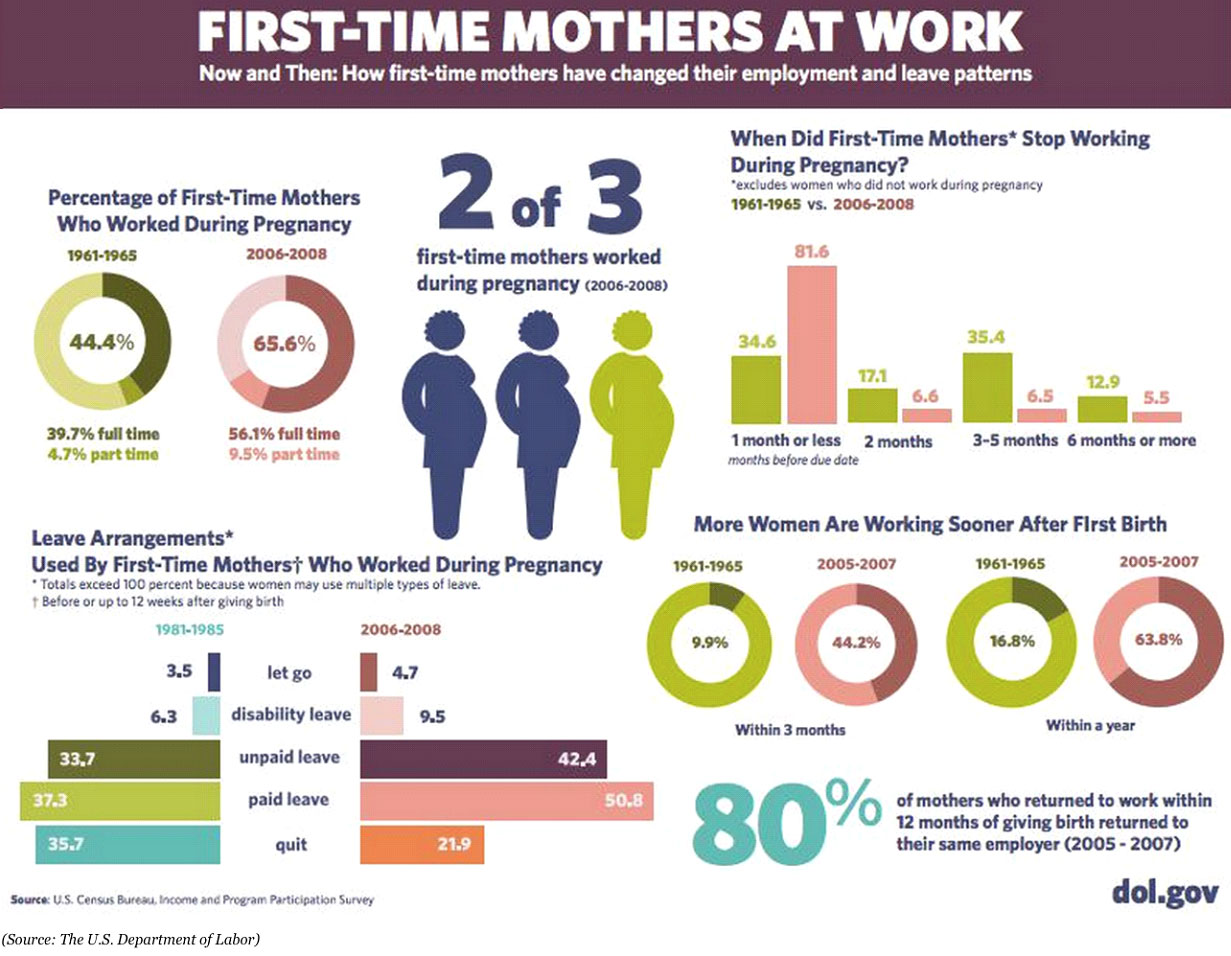Maternity Leave Facts and Figures for the U.S.
Welcome to our collection of the best content we could find about maternity leave! We've mainly focused on aggregating publicly available data — using official statistics and primary sources. We've also collected some great academic papers, non-profit research and in-depth articles we think provide important information about parental and maternity leave.
Please let us know if we’re missing any great resources on the topic and we'll add them!
United States Resources
According to the U.S. Bureau of Labor Statistics, 12% of civilian employees had access to paid family leave in 2013. This table breaks down who gets paid family leave, and who doesn’t. (The reason that some totals are greater than 100% is that some workers have access to both paid and unpaid leave).

To provide historical perspective, this chart by the U.S. Department of Labor (courtesy of Forbes) shows shows a few things have changed in the last 50 years for first-time mothers working outside the home:
- Working moms work later into their pregnancies (1 month or less before giving birth)
- Working moms return to work sooner after giving birth
- Working moms have more access to more maternity leave (paid, unpaid, or some combination)

Working moms have more access to paid and unpaid leave thanks in part to federal legislation, called the Family Medical Leave Act (or FMLA).
For more about the FMLA and other laws, click here
To see how the U.S. compares to other countries (hint: very poorly), see our research on International Parental Leave
Fairygodboss is committed to improving the workplace and lives of women.
Join us by reviewing your employer!
Why women love us:
- Daily articles on career topics
- Jobs at companies dedicated to hiring more women
- Advice and support from an authentic community
- Events that help you level up in your career
- Free membership, always
